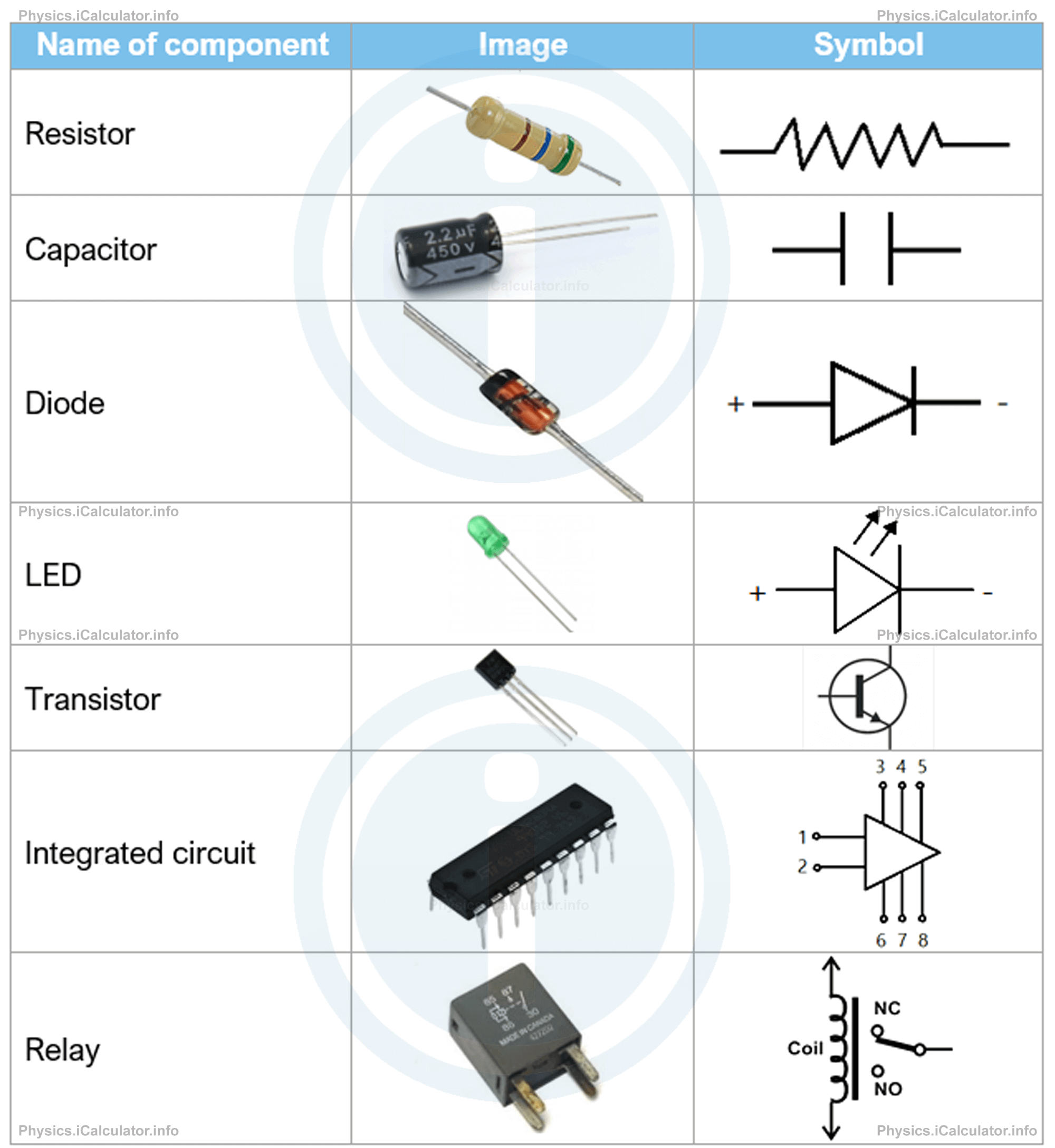Menu
Physics Lesson 17.2.1 - Electronic Components
Please provide a rating, it takes seconds and helps us to keep this resource free for all to use
Welcome to our Physics lesson on Electronic Components, this is the first lesson of our suite of physics lessons covering the topic of Electronic Components and Switching, you can find links to the other lessons within this tutorial and access additional physics learning resources below this lesson.
Electronic Components
An electronic component is a basic element that contributes for the development of an idea into a circuit for execution. Each component has a few basic properties and it behaves accordingly. The idea for all components comes from developers and is applied by electronic engineers, in order to use them for the construction of the intended circuit. The following list shows a few examples of electronic components that are used in different electronic circuits.
- Resistors. Unlike in electric circuits, resistors here are not used to convert electricity into heat but to keep currents and voltages at the required levels instead, in order to make the other components operate properly.
- Capacitors. They are used to store small amount of electric charges in their plates. This electric charge is eventually used in smoothing circuits, time-delay circuits, in transitory processes (for example when passing signals from one circuit into another), etc.
- Diodes. They let the current flow in a single direction only. Remember that the current flowing in AC circuits is bi-directional.
- Light emitting diodes (LEDs). They are used as warning tools as they glow when a small current flows through them. LEDs are also used in ON/OFF systems such are relays, switches, etc.
- Transistors. They are circuit components used for signal amplification and electronic switching.
- Integrated circuits (ICs). These tools (also known as "microchips") contain many small circuits connected in the same board.
- Relays. They are electromagnetic switches where small currents control large circuits.
The following table includes a real image and the circuit symbol for each of these components.

You have reached the end of Physics lesson 17.2.1 Electronic Components. There are 5 lessons in this physics tutorial covering Electronic Components and Switching, you can access all the lessons from this tutorial below.
More Electronic Components and Switching Lessons and Learning Resources
Whats next?
Enjoy the "Electronic Components" physics lesson? People who liked the "Electronic Components and Switching lesson found the following resources useful:
- Overview Feedback. Helps other - Leave a rating for this overview (see below)
- Electronics Physics tutorial: Electronic Components and Switching. Read the Electronic Components and Switching physics tutorial and build your physics knowledge of Electronics
- Electronics Revision Notes: Electronic Components and Switching. Print the notes so you can revise the key points covered in the physics tutorial for Electronic Components and Switching
- Electronics Practice Questions: Electronic Components and Switching. Test and improve your knowledge of Electronic Components and Switching with example questins and answers
- Check your calculations for Electronics questions with our excellent Electronics calculators which contain full equations and calculations clearly displayed line by line. See the Electronics Calculators by iCalculator™ below.
- Continuing learning electronics - read our next physics tutorial: Electronic Essentials: Analogue and Digital Signals, Binary Operations and Logic Gates
Help others Learning Physics just like you
Please provide a rating, it takes seconds and helps us to keep this resource free for all to use
We hope you found this Physics lesson "Electronic Components and Switching" useful. If you did it would be great if you could spare the time to rate this physics lesson (simply click on the number of stars that match your assessment of this physics learning aide) and/or share on social media, this helps us identify popular tutorials and calculators and expand our free learning resources to support our users around the world have free access to expand their knowledge of physics and other disciplines.